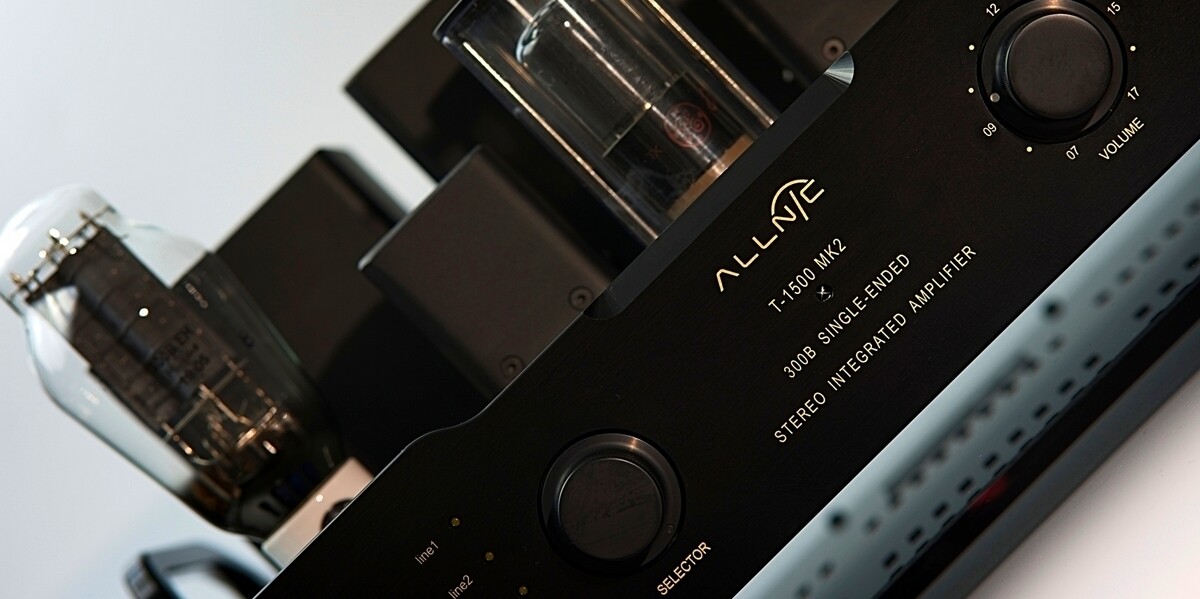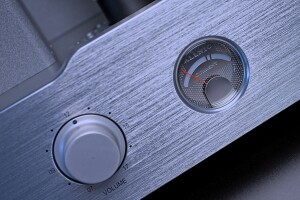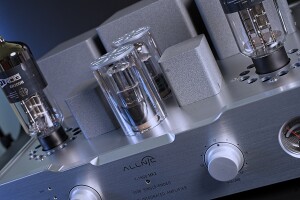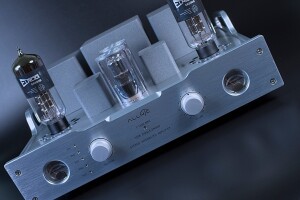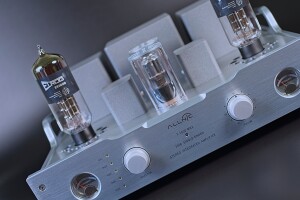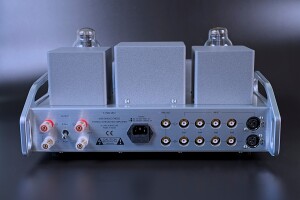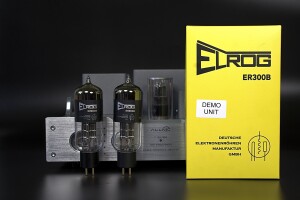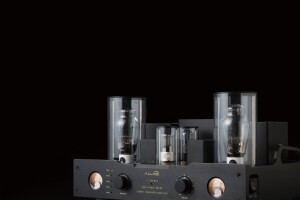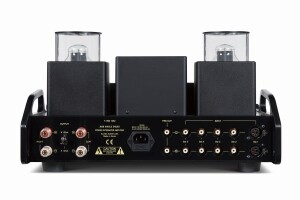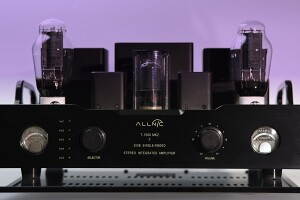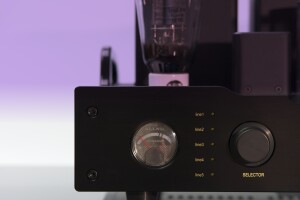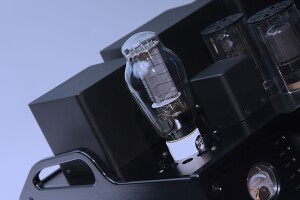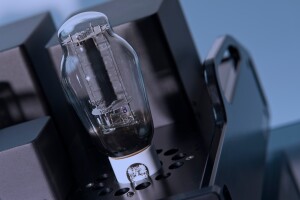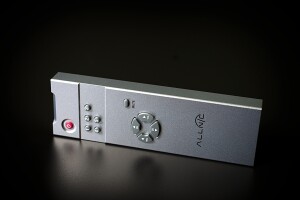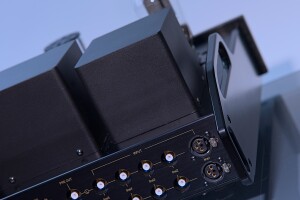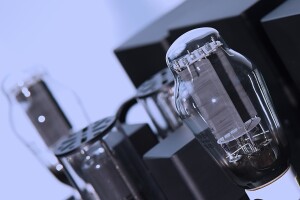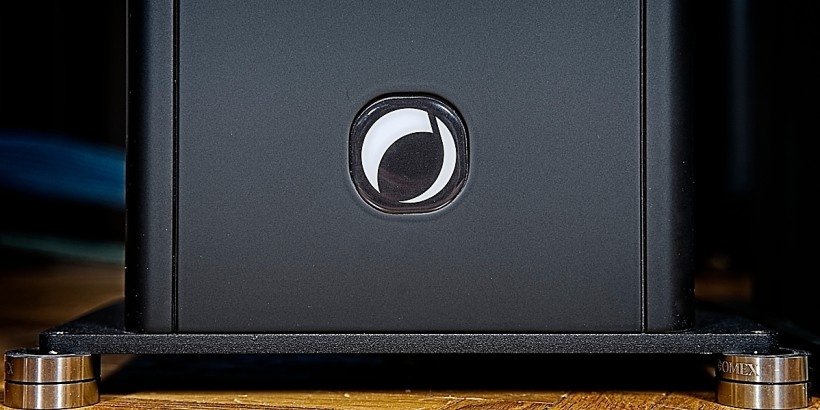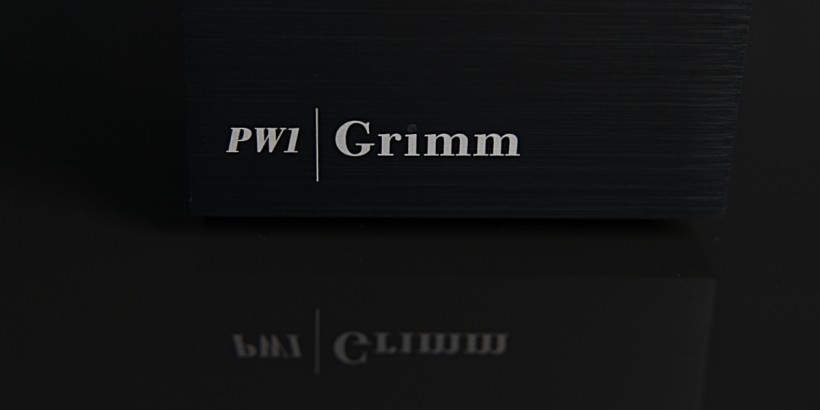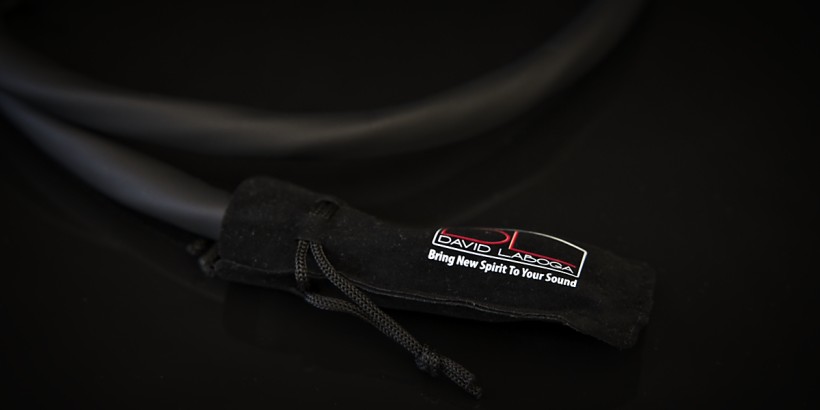There is something extraordinary about SET amplifiers, particularly the ones with the most famous triode, the 300B. It doesn’t mean that they are the best choice for everyone, not every genre of music sounds best with them, but with the right loudspeakers, they can deliver pure magic that is so easy to fall in love with. Allnic Audio T-1500 MK II is a truly exquisite example of the species.
Introduction
It is not my first adventure with one of the products of the Korean brand Allnic Audio. I had already spent quite some time with their three other products. First, for the HiFiKnights readers, I assessed the top cartridge of this manufacturer called Amber (see HERE). Then came the H-5500 tube phono stage that opens the lineup (see HERE). On HighFidelity.pl you can find a review of the powerful, T-2000 30th Anniversary integrated (see HERE) featuring the latest KT170 tubes. As each of these texts contains information about the history of Allnic Audio, let me refrain from repeating them once more. If you’re interested let me refer you to those reviews, with the Amber one in particular, as it will offer you the most relevant information. Let me sum it up for you – the essence of the company’s success is hidden (at least partially) in its name. The latter comes from the phrase “all nickel”, and this, in turn, refers to the alloy called Permalloy (based on nickel and iron), which is used in the core of all transformers used by this brand. And that’s one of the things that make Allnic devices quite special.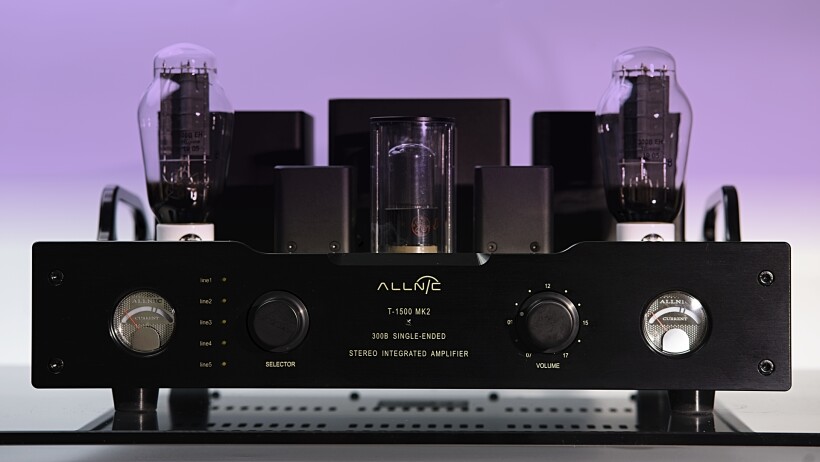
This time, as you have read at the beginning, the subject of the review represents a unique breed of amplifiers that has had its huge fan base (including yours truly) for many years, the so-called SETs. The abbreviation means Single Ended Triode, which indicates that the amplifier’s single-ended output stage features one of the tubes called triodes. Probably the most famous among them, and by many considered the best, or at least the most magical, is the 300B, though you will find many fans of 2A3, 45, 211, and others. It is one of the many advantages of tubes, namely (almost) everyone can find their own favorite “flavor” among them. Although I have mentioned it in many of my reviews over the years let me add, that I also love this particular tube above all. As you can imagine, it means that I always welcome all promising 300B SETs into my room.
Based on the above, on the one hand, it would seem that I may be favoring the T-1500 MK II even before listening to it. On the other hand, though, after listening to many 300B SETs from various price ranges and from different parts of the world, I know quite well how fantastic performance such a design can offer. This, in turn, means that the bar is always set quite high, in this particular case may be even higher than usual because of my previous experiences with Allnic Audio products. The Polish distributor, 4HiFi, to make my time spent with the T-1500 MK II even more enjoyable, at some point sent me an alternative pair of 300B tubes made by Elrog. As I also have my own pair of Western Electric triodes (not from current but previous production), I was hoping for a lot of fun with this amplifier.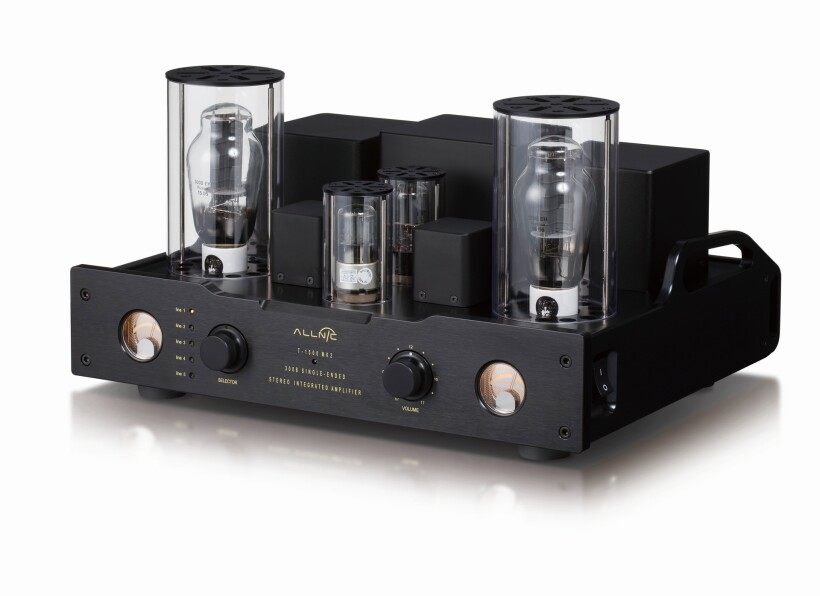
Design and features
Most Allnic Audio devices look quite similar and distinctive, and the T-1500 MK II is no exception, although… The hallmark of this brand’s amplifiers are glass “chimneys” with metal, perforated caps at the top, used as a decorative element but at the same time as tube covers. As the distributor told me, I got a „special” unit for the test, namely one missing those chimneys usually installed over the output tubes. Aesthetics aside, it made tube rolling much easier, which was a welcomed side effect of this „defect”. Just to be clear – chimneys are a standard feature and if you decide to purchase this device, they will be there in your unit. I’ve just mentioned the lack of these since you will most likely notice that the black version on some photos is missing them. Yet the silver unit, which at some point replaced the black one, was a complete one.
Smaller, input and driver tubes, the 6SL7 and 6SN7, in both units, black and silver ones, also feature such chimneys. The solid, rigid chassis, flawlessly made and finished in black, looked great on my rack (the silver one too, but I have a soft spot for the black finish). The amplifier is equipped with four solid anti-vibration feet. And yet, ever since I tested and later acquired the Graphite Audio IC-35 anti-vibration cones (test HERE), I’ve been using them with every tube device, as well as with many others. Hence, at some stage of the test, I also placed them under the reviewed amplifier and they turned out to work with the T-1500 MK II really well, so consider them a worthy upgrade.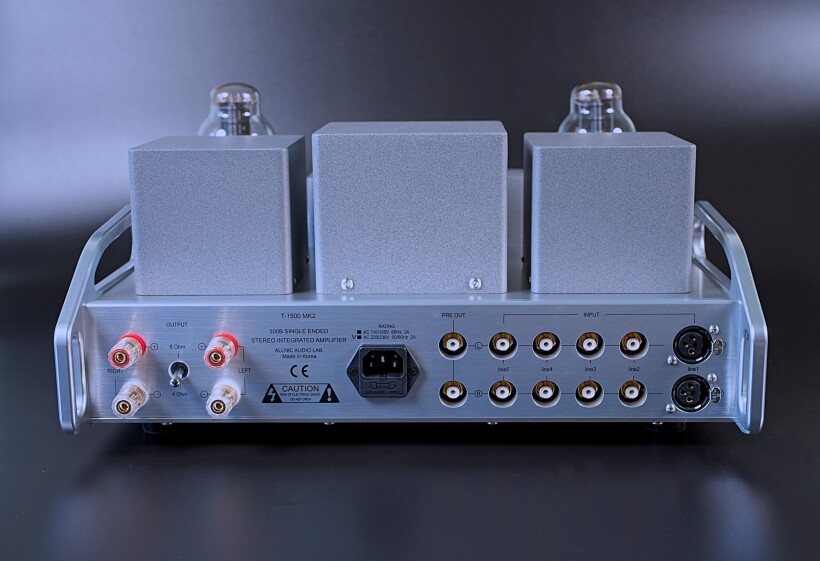
Allnic Audio T-1500 MK II is a Class A tube design using, to my surprise, some negative feedback (-6 dB). As the manufacturer, who calls this feedback “natural”, explains, it allows for a relatively high damping factor, low distortion, and a better signal-to-noise ratio (S/N). All this translates to better control of the loudspeakers while maintaining all the inherent features of a SET. Another key element of the design that should get credit for the ultimate sonic performance is a unique driver stage featuring two 6SN7 double triodes, which combined deliver a voltage gain of 35 dB with a low (for this type of design) distortion level of only 0.3%. On top of that let’s add the company’s hallmark, the output transformers with Permalloy cores (nickel-iron alloy) and the final result is an output of 10W per channel, while the standard value for a 300B SET is 8W (@ 8Ω).
There are two knobs on the front of the device, one serves as an input selector, and the other controls the volume. The former is accompanied by a column of amber LEDs with descriptions – selecting a specific input will highlight the corresponding LED. The attenuator used in this amplifier is a proprietary development of Allnic Audio, or its version no. 2, with silver contacts, operating in 41 steps. The resistance to turning the knob is so significant that you will probably quickly learn to use the remote control for this job. The very nice-looking elements of the front panel placed on both sides are the illuminated analog meters that allow you to read the bias for output tubes. It is worth noting, however, that the amplifier is equipped with an automatic bias control system. There is also one responsible for delayed start, which extends the lifespan of the tubes.
On the upper surface of the chassis, at the side edges in the rear part, you will find yet another element characteristic of this brand’s products, i.e. the handles that can be used to lift or carry it. The main switch is placed on the right side of the amplifier (looking from the front). On the back of the device, there is an unbalanced output (RCA) from the preamplifier section (a pre-out), four unbalanced RCA inputs, and a balanced one (meaning an XLR socket but remember that this is a single-ended amplifier, so this input was added only for the convenience of users). The amplifier features a standard IEC power inlet. There is a simple flip switch between loudspeaker posts that allows you to choose between 4 and 8 Ω taps to better match your speakers. On request, it is possible to order an amplifier with 16 Ω output.
Sound
For several years now, when it comes to testing most amplifiers, including all low-output ones, a pair of the excellent GrandiNote MACH4 loudspeakers (a test of my older, aluminum version, in Polish, can be found HERE) has been my go-to. This time, however, I started my T-1500 MKII listening sessions using Polish speakers that I tested at the time, which, same as the Italian ones, are not only highly versatile breed but also great sounding (even if they are not quite as easy to drive as the MACH 4). The model I am talking about was the Claude by the Poznań-based brand Intrada. These are 4Ω loudspeakers with an efficiency of 90 dB, but the impedance linearization solution used in them, both according to the manufacturer and in practice, worked really well. As a result, they turned out to be perfect partners for the Allnic Audio T-1500 MK II. Hence, I started auditioning the latter with them, leaving the MACHs 4 for a dessert (and also for the later stage when I turned to tube rolling).
It quickly became clear to me that the Korean amplifier is a classy SET, despite the fact that it uses “only” Electro Harmonix 300Bs (also NOS tubes to control and drive the latter). Later transition to my own Western Electric 300B quickly proved, that there is still some space for improvement, but what I heard with the quite average (at best) Russian tubes, only increased my respect for the designer, Mr. Kang Su Park. It was not the first such case – I once tested a competitor from Wavac, which featured equally average JJ tubes, but also in that case they sounded really good in a given application. That’s one of the things you’ve probably already learned if you’re a tube aficionado or you should learn if you’re just starting your adventure with valves. The application, meaning circuits, transformers, and other components often matter even more than the tubes one uses. You can achieve more with very good design and average tubes than with great tubes applied in a poorly designed amp.
But let’s go back to the T-1500 MK II driving (at first) the Entrada Claude. Although, as my previous comparisons showed, these were loudspeakers with a slightly more weighted sound, with a lower center of gravity than my MACHs4, calling them ‘warm-sounding’ would not be true. It quickly became clear that the tested integrated couldn’t be called that either. It is definitely not a warm-sounding amplifier, in the common sense of the word, i.e. one that makes each recording sound nice, soft, round, and therefore similar to almost any other one. With the Allnic Audio T-1500 MK II, we get a perfectly organized, structured sound, arranged in an exceptionally large, open, air-filled space. This is why the “Asian roots” album recorded almost exclusively with the use of instruments made of bamboo sounded remarkably good with the tested amplifier. The soundstage was extending far beyond the space between the speakers and beyond the wall behind them, there was an excellent differentiation of individual instruments, a surprisingly low extension of the bass, plus the immediacy of each strike of the drummer’s sticks, and the lengthy reverberation. All these elements combined into a coherent whole that I supposedly knew by heart, and yet with the T-1500 MK II sounded fresh and attractive, and highly enjoyable.
It was a bit surprising even for me how well Allnic handled these speakers. The 90 dB sensitivity is considered relatively high, but these were quite large loudspeakers, so on paper, they did not seem a perfect match. It’s just that theory and practice more often than not, do not go hand in hand, especially in audio, and it was no different this time. The T-1500 MK II effortlessly drove Claude, no matter what kind of music I chose for them. The sound with this 10-Watt amplifier was relaxed, beautifully open, with saturated timbres, excellent micro-dynamics, and also really good in the macro scale. Therefore, although I did not listen to many symphonic pieces, I did play many rock tracks from my J.Sikora turntable. They just sounded so good that I couldn’t stop after one or two.
Contrary to what 300B SETs usually offer (especially when paired with not-that-easy-to-drive speakers), the bass was tight and well-differentiated, it extended quite low and exploded with lots of energy quickly when needed. The bass notes were not as contoured, or as tight as with powerful solid-state amplifiers, but also had nothing to do with the soft, rounded bass that a lot of lesser quality tube amplifiers (sometimes due to less than optimal pairing with speakers) are known for. In a word – the combination of the Allnic Audio T-1500 MK II with the Intrada Claude turned out to be a big, positive surprise, proving that the tested amplifier offers better control over the loudspeakers than many, if not most, of its competitors.
After such an encouraging start to this test, the time came for the “proper one” using my trusted GrandiNote MACH 4. These are loudspeakers that deliver fast, dynamic, pure sound, perhaps with not as powerful bass as the Claude’s, but exceptionally tight, precise, and perfectly differentiated. Most of the 300B SETs I knew, including my own ArtAudio Symphony II (modified), sounded warmer, fuller, or slightly more focused on the midrange, if you will than the Allnic. Therefore, after a few attempts, as the main source, I chose the densest/richest of those I had at my disposal, i.e. the GrandiNote Celio MK IV phonostage (see HERE) amplifying signal from my J. Sikora Standard Max with the KV12 tonearm (with new cabling – review pending) – and alternately the Air Tight PC-3 and Ortofon Verismo cartridges.
Even in this setup, the sound was not exactly what I usually expect from this type of amplifier. Why? Well, the key part of the band, midrange, sort of specialty of SET amps, was definitely not particularly emphasized, it did not dominate the band’s extremes. It did not lack anything, to be clear, it was tuneful, resolving, open, clean, and rich but the same could be said about the treble and bass, and they all combined into a beautifully coherent whole. Actually, it turned out to be one of the best-balanced SET amplifiers I know. In this respect, it reminded me of the latest (and in my opinion the best) version of another great 300B SET, namely the Air Tight ATM-300R. That is why, for example, on Adam Czerwiński Trio’s “Kiedy byłem” album, on the one hand, both the vocals and the electric guitar, benefited from this dense midrange, saturated with perfectly differentiated information, and on the other, the leader’s percussion (at both band’s extremes), or both acoustic and electric bass, sounded so good, so convincing.
While the realistic, tangible, dense, colorful, highly expressive presentation of the elements focused in the midrange (guitar and voices) was no surprise, the tight, fast, springy drums, but also sufficiently crisp, resonant, and at the same time delicate when needed, perfectly differentiated cymbals, were, at least to a point. They were because while the 300B designs can show an excellent treble, full of air, open, crystal clear, at the same time it is usually a rather slightly softer, smoother version of it. There was (almost) no such effect here – a drumstick hitting strongly against a metal initiated an appropriately strong, energetic response of the latter, and the individual sounds were well-differentiated. In a way, it was a bit more (let me make a stereotypical simplification) transistor-like, i.e. more direct, harder, and a bit sharper treble than, for example, with my own Symphony II. Based on experience I was ready to risk a guess and attribute it at least partly to the Electro Harmonix 300Bs. Since I planned some tube rolling for later, I knew I would have a chance to check out this theory.
Comparing this recording, but also some other albums of Ray Brown or Marcus Miller, it seemed to me that the T-1500 MK II had a clear advantage over my SET when it came to electric bass, which was tighter with it, harder (but not too hard), more powerful, and the quickness and energy of each string pluck was better reproduced. I preferred the acoustic bass with the ArtAudio, on the other hand, because the latter seemed to slightly better convey the sustain and decay. None of these differences were huge or significant, though. I still truly enjoyed the electric bass on Symphony II and the acoustic bass with the Allnic. Nevertheless, they would probably be sufficient for some picky ears to go with one or the other. However, it again seemed to me that the output tubes played some, perhaps not that small, role in my assessment. The Allnic Audio T-1500 MK II performed already great, but could it get even better with the Western Electric or Elrog 300Bs?
300B Western Electric
I started with my own Western Electric ones, simply because I’d been using them for years and knew what to expect from them. Replacing tubes with others is not an operation that can be done in 20 seconds and even after that, you can’t start assessing the performance right away. After the replacement (let’s say relatively quick if the ‘chimneys’ are not installed), you still have to wait for the tubes and the amplifier to reach the right temperature. Hence each time I gave it at least 15-20 minutes before trying to define the differences. When the Western Electrics were installed the change in sound was quite unequivocal and rather expected in terms of its character. The American tubes added a bit more weight and filled the midrange and upper bass a touch more, but also widened the stereo base or soundstage. The vocals became even more tangible, present, and expressive, and the double bass took on a bit more body because the balance between strings and wood slightly shifted towards the latter. Even the electric guitar sounded fuller. The treble lost a bit of that extraordinary energy presented by Allnic earlier, but it gained in terms of refinement, sweetness, and delicacy, which are the inherent features of this magical triode that so many fans, me included, highly appreciate. Also, the bass, particularly the lowest notes, were presented a bit differently – they were not that tight and springy, but more saturated, more weighty, and tuneful.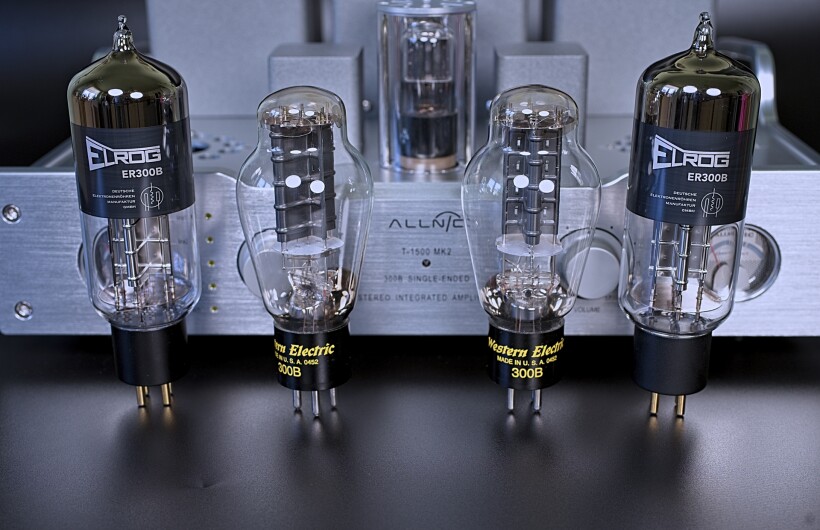
Next albums convinced me that the slightly ‘rawer’, so to speak, less refined Electro Harmonix tubes sounded better in Allnic when the music required (raw) power and proper momentum, which was the case with rock music or any other recordings that needed some “dirt” in it to sound properly. Yet, acoustic and vocal albums for me sounded definitely better with WE tubes. The latter offered a more refined, for lack of a better word, ‘nobler’ sound, delving better into the nuances of timbre and textures of individual instruments and voices, sounding smoother and more fluid. They also had the already mentioned advantage in terms of spatial aspects of the presentation and precision of the three-dimensional imaging. Whenever a convincing presentation of the acoustic environment of played recordings was needed, i.e. primarily (but not only) in live ones, where emotions and the presence of performers were captured exceptionally well, the WE triodes performed clearly better than the EH ones.
One of the examples of such albums was the aforementioned Ray Brown Trio’s “The Red Hot”, released on two 45 r.p.m. discs. It is a fantastic recording and release that I often return to, but to be honest, I’ve always liked it best with SET amps, preferably 300B ones. Wonderfully pure, clearly sounding, but also well-weighted, colorful piano, well-recorded drums, and my favorite double bass, they all were perfectly captured on tape in a small club. The method of recording allows for extremely close, direct contact with both the musicians and the spontaneously reacting audience. It was this unique ability to re-create the atmosphere of the one-of-the-kind musical spectacle and interactions between the band and fans that distinguished the Allnic T-1500 MK II from many other amplifiers. Western Electric tubes deepened this experience by rendering larger, fuller, more tangible phantom images precisely located on the stage. With them, the music sounded smoother, more coherent, just even more natural.
ELROG 300B
I left the only 300Bs I was unfamiliar with, meaning the Elrog ones, for last. Of course, I’d heard a lot about the brand and its products before, I also had some opportunities to listen to amplifiers with Elrog vacuum tubes on board (during the Munich High End Show), but only listening to them in my own system could tell me if and how good these valves were. To be honest, I was also looking for an answer on whether I should consider them as worthy successors to my WEs once the latter would finally end their reign sooner or later. The Allnic T-1500 MK II had already proven to be an ideal tool for getting to know these new tubes and comparing them to the others at my disposal. It seemed to show the differences between the power tubes very well, even better than my Symphony II.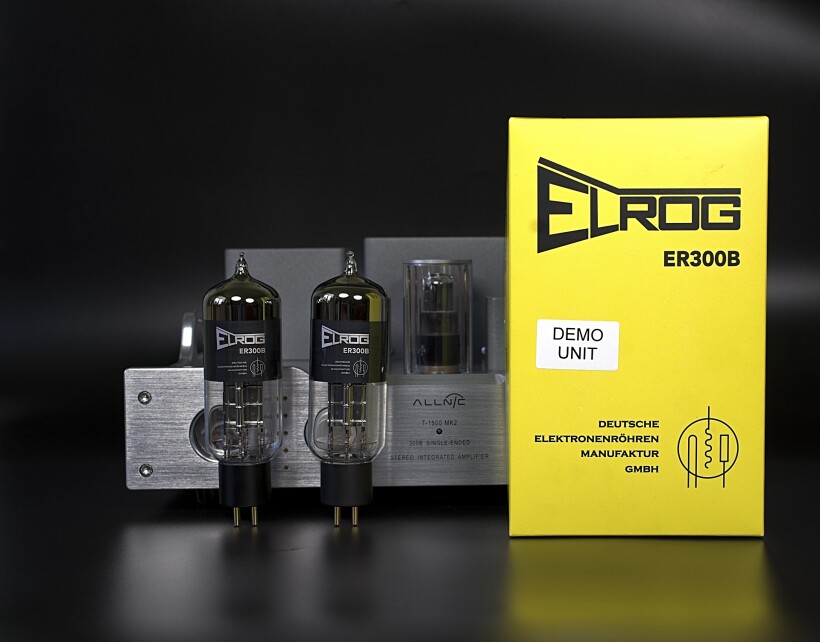
The Elrogs in this setup offered a sonic character that I placed somewhere between the EH and WE tubes, although they presented a level of performance closer to the latter. On the one hand, they delivered sound with more authority, more precision than the WE, they emphasized the faster phase of the attack a bit more, they delivered tighter, more powerful low tones and a bit harder, stronger treble, in which they resembled the EH (in character, not class). At the same time, in the latter range, they were more resolving and refined than the EH, and better bass tightness was accompanied by its higher density, better filling, and differentiation. So while the recordings of electric bass, e.g. of Marcus Miller, fared similarly (not the same) with the Elrog and the EH, in the case of Stanley Clarke’s or Ray Brown’s double bass, the former reproduced the sound of this instrument in a more natural, more colorful, and deeper way, which also applied to a more natural, more colorful midrange.
The treble, a bit less delicate, a bit less sweet with the Elrogs than with the WEs, was however equally refined, ‘noble’, and natural. So when it came to recreating a piercing-sounding trumpet, Elrogs, same as WEs, delivered this sharpness in a convincing way, while ensuring that it remained natural, not exaggerated. The point was to make the listener (me) perceive it in the same way as while at some live concerts, i.e. as an instrument’s inherent, and not irritating feature. With the EH tubes, it did happen a few times that this line was occasionally crossed and the trumpet began to pierce my ears a bit. When, on the other hand, it was necessary to deliver a strong triangle sound, even against the background of a large orchestra, the Elrogs in Allnic Audio presented it in a fantastically powerful, vivid, pure, but also, once again, very natural, not exaggerated way, which was clearly superior to the EH’s.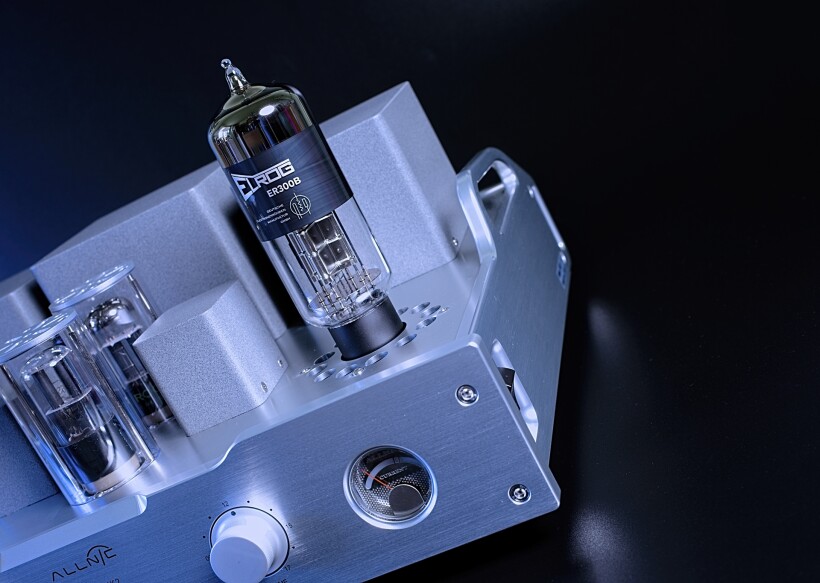
As a person who has been using WE tubes for many years, even if not as often as I would have liked, I may not be entirely objective when it comes to comparing them with other brands’ tubes. Especially that I just like, even prefer this certain delicacy, sweetness, and airiness (while maintaining great purity) of treble, and the dense, so dense that almost (importantly only almost!) syrupy presentation of the fabulously colorful midrange. However, I think that many people would agree with my assessment after listening to my system (in others the results may differ). I would place both the Western Electric and Elrog tubes side by side on a very, very high shelf with the latter reminding me also of other top-quality tubes by Takatsuki. They present the same outstanding class and level of refinement, although of a slightly different character. Therefore, the choice between them, whether it is for the Allnic T-1500 MK II or another SET, should be quite simple for many people. Those who prefer a more romantic, emotional side of the presentation will choose the former, those who prefer a bit more precision, tighter low tones, and a bit easier (not necessarily better) insight into the deeper layers of music, will probably reach for Elrogs.
I would like to have both, using them alternatively depending on the repertoire and mood. However, I have no doubts that both of these propositions are more sophisticated than the EH tubes. Having said that, dear readers, let me point you to the first part of this test, where I tried to describe how the Allnic Audio team achieved excellent sound with the tested amplifier featuring these basic valves. So if you decide to purchase the T-1500 MK II there will be absolutely no need to immediately invest another significant amount in higher quality tubes. Let’s reserve this upgrade for those expecting to get the most out of this amplifier from the start. Others will most likely wait until power tubes age and replacement becomes necessary and then they shall look for a better alternative. Elrogs will be surely one of the most interesting ones.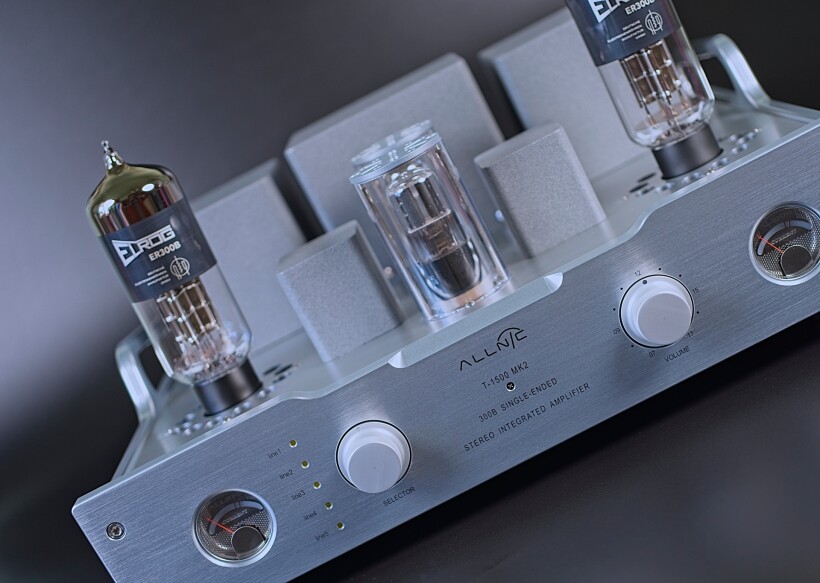
By the way, users of this amplifier, same as most tube-based devices, have yet another way of shaping the sound that I haven’t even touched, i.e. trying out various input and driver tubes. In many cases, replacing them with their higher-class, often NOS, counterparts yield even greater sonic effects than replacing the power tubes. In this case, the amplifier featured already excellent signal tubes, so it would not be easy to achieve an even better sound, but tube rolling isn’t always about better, but rather about a different sound. Many tube lovers own multiple tubes offering various sonic qualities, sometimes best suited for particular types of music or just moods. This is one of the many unique advantages of owning a tube device. Once you buy them you’re not stuck with one sound signature forever, but you can tune it to your liking. This is something that no solid-state amplifier will give you.
VIBEX Granada Platinum
Before finalizing my review of the T-1500 MK II, I decided to conduct one more experiment based on the experience from other tests carried out at the same time. It so happened, that I also tested an expensive power strip, probably even the best one (from my point of view, and in my system, of course) that I had ever dealt with, i.e. the top model of the Spanish Vibex, called Granada Platinum. The aforementioned experiences suggested that it was a strip, to put it (again) stereotypically, targeting rather an advanced music lover than an audiophile. The thing is that its impact on the sound was mainly manifested in the incredible smoothness and fluidity of the sound, and consequently, in almost insane, highly addictive naturalness. What’s more, it did not matter what components I plugged in, these changes in their sound always followed the same direction. Considering that even with Western Electric and Elrog tubes, the Allnic still differed from the 300B SET stereotype, as it did not sound as lush or sweet as most representatives of this genre, I wanted to find out what would happen if I connected it, and sources, to the Granada Platinum.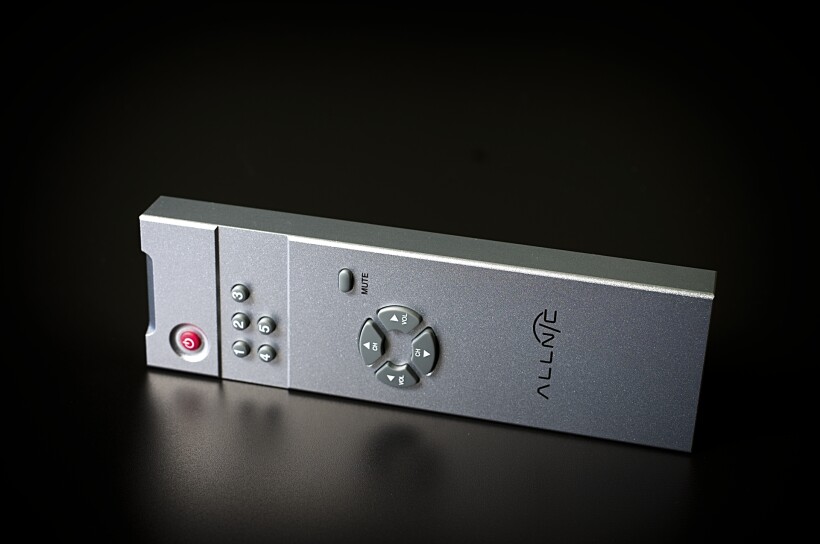
I am well aware that adding a 25,000 PLN power strip to the system will be considered by many people as … an extravagance, to put it mildly, but first of all, the Gigawatt conditioner I use in my system costs even more, and secondly, both sources, the turntable, and the DAC, are also more expensive than the reviewed amplifier. So in my case, it was not so crazy at all. Especially considering what I heard when I finally started listening to music with the Granada Platinum. The Allnic T-1500 MK II supported by the Granada Platinum sounded … on the one hand, more in line with the expectations that we usually have for this type of amplifier – more refined, smoother, more saturated, denser, with a blacker background and a slightly better insight into deeper layers of music and tiny details. On the other hand, it retained its character of an amplifier that delivers tight, fast, dynamic sound, saturated with both information and energy. So if you become the Allnic Audio T-1500 MK II owner and at some point decide you want it to sound even denser, and sweeter Vibex Granada Platinum is one of the options you could consider.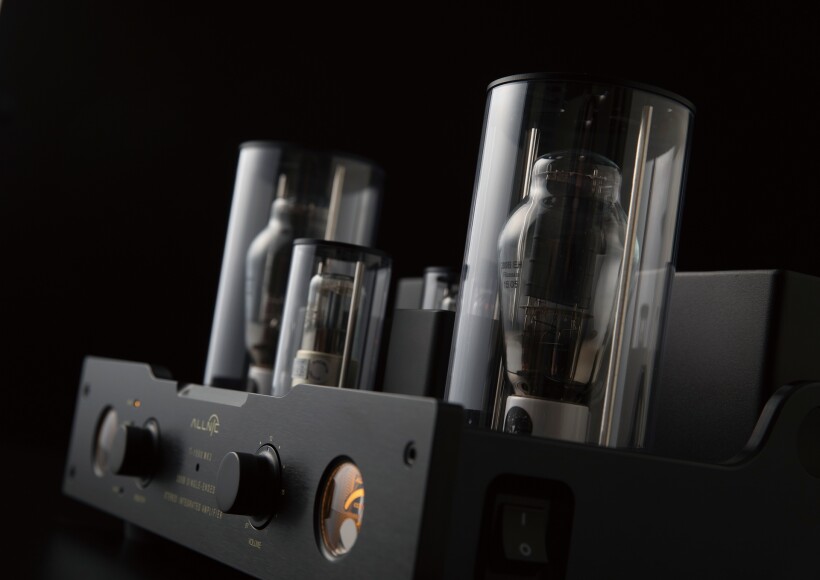
Summary
Comparing audio components based on listening sessions that are separated by months or even years is not particularly reliable. Nevertheless, let me risk it and say that the Allnic Audio T-1500 MK II is, next to the AirTight ATM-300R, the best (and at the same a bit cheaper among the two) SET 300B that I’d ever listened to in my system. What’s surprising is that it achieves this level with ‘regular’ Electro Harmonix power tubes, and as the tests have proven, it can get even better, and more refined with higher-quality tubes. It is an excellent SET offering a refined, natural, smooth, and coherent sound, but with a much better frequency range extremes than most competitors of this type. It delivers (although it depends to some extent on the tubes) an extremely spacious, tangible, expressive sound (as long as, of course, a recording allows it).
It is a sound that makes me smile while listening, that is immersive and relaxing at the same time, fatigue-free even during long listening sessions. It seems that the Allnic Audio T-1500 MK II, perhaps due to the low feedback, and certainly thanks to the excellent output and power transformers, has a bigger capability to drive speakers than most 300B SETs that I know. It means that its owner can choose speakers from a larger pool of those. Having said that, I would like to emphasize once again that the choice of loudspeakers is absolutely crucial in the case of any low-power amplifier. If you find the right ones and add a high-quality source to the mix, then the Korean amplifier can become one ‘for life’, as they say. It will offer you a chance to forget about the system and its upgrades and focus on what is most important, which is music.
Technical specifications (according to the manufacturer):
- Output: 10 W + 10 W (4, 8, or 16 Ω load, @ 1kHz)
- Distortion: 0,3% @ 1 kHz at 2,83 V
- Frequency response: 20 Hz-20 kHz
- S/N ratio: -80 dB (CCIR, 1 kHz)
- Damping factor: 10 at 8 Ω load @ 1 kHz
- Voltage gain: +35 dB
- Input impedance: 10 kΩ (single-ended, unbalanced)
- Input sensitivity: 230 mV
- Fuses: AC Mains – 3A / 250V (110W) (two supplied – one is a spare). Tubes -0.5A, 250V, 20mm glass type
- Tubes: 300 B x2, 6SL7 x1, 6SN7 x1
- Dimensions (W x D x H): 430 mm x 380 mm x 240 mm
- Weight: 22 kg (net)
Price (when reviewed):
- Allnic Audio T-1500 mk II: 8.250 USD
Manufacturer: ALLNIC AUDIO
Polish distributor: 4HiFi
Associated equipment:
- Digital source: a custom passive server with WIN10, Roon, Fidelizer Pro 7.10, JCAT NET XE, and JCAT USB XE cards with FERRUM HYPSOS Signature power supply, KECES P8 (mono) linear power supply for the server, JCAT USB Isolator
- D/A Converter: LampizatOr Pacific +Ideon Audio 3R Master Time (USB signal regenerator)
- Analog front end: J.Sikora Standard MAX turntable, J.Sikora KV12 tonearm, AirTight PC-3, phono stages: Grandinote Celio MK IV, ESE Lab Nibiru V 5.
- Power amplifiers: GrandiNote Shinai, Circle Labs M200
- Preamplifier: Circle Labs P300
- Loudspeakers: GrandiNote MACH4, Ubiq Audio Model ONE Duelund Edition.
- Interconnects: Bastanis Imperial x2, Soyaton Benchmark, Hijiri Million, Hijiri HCI-20, TelluriumQ Ultra Black, KBL Sound Zodiac XLR, David Laboga Expression Emerald USB, David Laboga Digital Sound Wave Sapphire Ethernet
- Speaker cables: Soyaton Benchmark
- Power cables: LessLoss DFPC Signature, Gigawatt LC-3
- Power: Gigawatt PF-2 MK2 and Gigawatt PC-3 SE Evo+; a custom power line with Gigawatt LC-Y in-wall cable; Gigawatt G-044 Schuko and Furutech FT-SWS-D (R)
- Network: Silent Angel Bonn N8 + Silent Angel Forester F1 + optical LAN isolator
- Racks: Base VI, Rogoz Audio 3RP3/BBS
- Anti-vibration accessories: ROGOZ-AUDIO SMO40 and CPPB16 platforms and ROGOZ AUDIO BW40MKII feet, Franc Accessories Ceramic Disc Slim Feet and Wood Block Platform, Graphite Audio CIS-35 and IC-35


